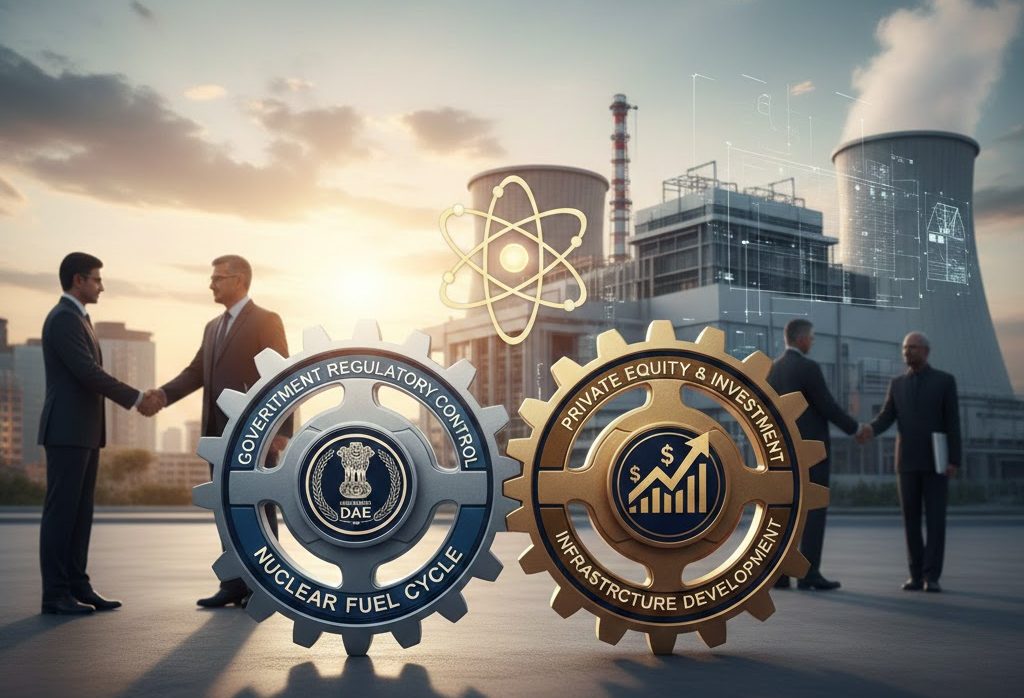Rising Wildfires and the Global Carbon Crisis
Wildfires Alarming Shifts in Carbon Sinks
Context: Wildfires are becoming increasingly destructive worldwide, exacerbating the global carbon crisis. Recent events in the U.S. and Japan highlight the devastating effects of wildfires, while research indicates alarming shifts in critical carbon sinks like the Arctic Boreal Zone (ABZ).
More on News
These changes signal a growing concern for the future of climate regulation, and the planet’s ability to absorb the carbon emissions generated by both human activity and natural disasters.
Key Events and Impact of Wildfires
Destructive Fires in the U.S. and Japan:
- Texas and Oklahoma Wildfires (2025): Devastating fires scorched parts of Texas and Oklahoma, destroying nearly 300 homes and reminding many of the destruction from similar fires in Los Angeles earlier this year.
- In California, fires across Eaton and Palisades killed at least 28 people, destroyed over 14,000 structures, and forced mass evacuations. The fire ravaged over 16,000 hectares, marking one of the most destructive fires in California’s history.
- Japan’s Ofunato Wildfire (2025): A wildfire in the mountainous region near Ofunato city, Japan, spread across nearly 2,900 hectares, claiming one life and damaging 210 buildings. Over 4,200 residents had to evacuate, making it one of Japan’s most severe wildfires in decades.
Global Carbon Emissions Surge:
- Increased Carbon Emissions: According to the Copernicus Air Monitoring Service (CAMS), wildfires in January 2025 released 800,000 tonnes of carbon, nearly four times more than the same period a decade ago.
- Satellite Monitoring: NASA’s Terra and Aqua missions, which also monitor India’s seasonal farm fires, recorded the fires’ radiative power — the heat they emit — to be an order of magnitude higher than the long-term average from 2003 to 2024.
Wildfires in India and Rising Temperatures
India’s Wildfire Challenges:
- Forest Fires in India: In 2023-2024, Uttarakhand, Odisha, and Chhattisgarh recorded the most fires, with Uttarakhand alone documenting 5,315 forest fires between November 2022 and June 2023. Despite a slight decrease in fire hotspots from 2021-2024, forest fires remain a significant issue.
- Rising Land Temperatures: In 2023, researchers reported rising temperatures across India’s northwest, northeast, and central regions—0.1°C-0.3°C per decade in pre-monsoon seasons and 0.2°C-0.4°C per decade post-monsoon. These conditions create an environment ripe for more frequent wildfires.
Carbon Emissions from Wildfires in India: It is estimated that forest fires in India emit around 69 million tonnes of carbon dioxide annually, further contributing to global warming.
Carbon Sinks and the Arctic Boreal Zone (ABZ)
Decreasing Carbon Capture by the Arctic: The Arctic Boreal Zone (ABZ), a crucial carbon sink, has been significantly impacted by wildfires.
- Traditionally, the ABZ’s tundra, coniferous forests, and wetlands absorbed carbon helping regulate the global climate. However, a new study published in Nature Climate Change reveals that over 30% of the ABZ has now shifted from a carbon sink to a carbon source, releasing more carbon dioxide than it absorbs.
Study Findings on ABZ Carbon Emissions:
- Shifting Dynamics: The study, based on data from 200 monitoring sites globally between 1990 and 2020, shows that while northern ecosystems still absorb carbon, regions experiencing more frequent wildfires are releasing significant amounts of carbon. Specifically, Alaska accounted for 44% of new emissions, while northern Europe and Siberia contributed 25% and 13%, respectively.
- Summer carbon absorption (Jun–Aug) is now outpaced by emissions during non-summer months.
- Notable fire years: Eastern Siberia (2003) and Timmins, Canada (2012) emitted more carbon than the ABZ could absorb.
The Permafrost Thaw and Feedback Loop
- Thawing of Tundra Permafrost: Global warming is causing tundra permafrost in the ABZ to thaw. As soil dries out and plants change, the decomposition of organic materials releases significant amounts of carbon dioxide. This process is exacerbated by the increasing frequency and intensity of wildfires, which burn through these natural carbon reserves.
- Dangerous Feedback Loop: The release of carbon dioxide from wildfires contributes to further global warming, creating conditions for even more frequent and intense fires. This cycle represents a dangerous feedback loop.
- Wildfires release CO₂ → Accelerates global warming → Drier, hotter conditions → More wildfires.
The Arctic Report Card and Implications for Global Carbon Management
- NOAA Arctic Report Card (2024) supports findings: Arctic tundra is now a net carbon source due to fossil fuel pollution and wildfire emissions.
- Gerald Frost (Alaska Biological Research): Many of the Arctic’s vital climate indicators are breaking records yearly, signalling long-term, persistent climate change, not just natural variability.
- The increasing intensity and frequency of wildfires globally raises a crucial question: Are Earth’s natural carbon sinks — oceans, forests, soils — still adequate to absorb these rising carbon emissions?
- The transition of ABZ into a carbon source is a significant climate tipping point.
- Reinforces urgent need for:
- Global climate mitigation.
- Preservation of natural ecosystems.
- Policy interventions addressing fire management, emissions, and climate resilience.


